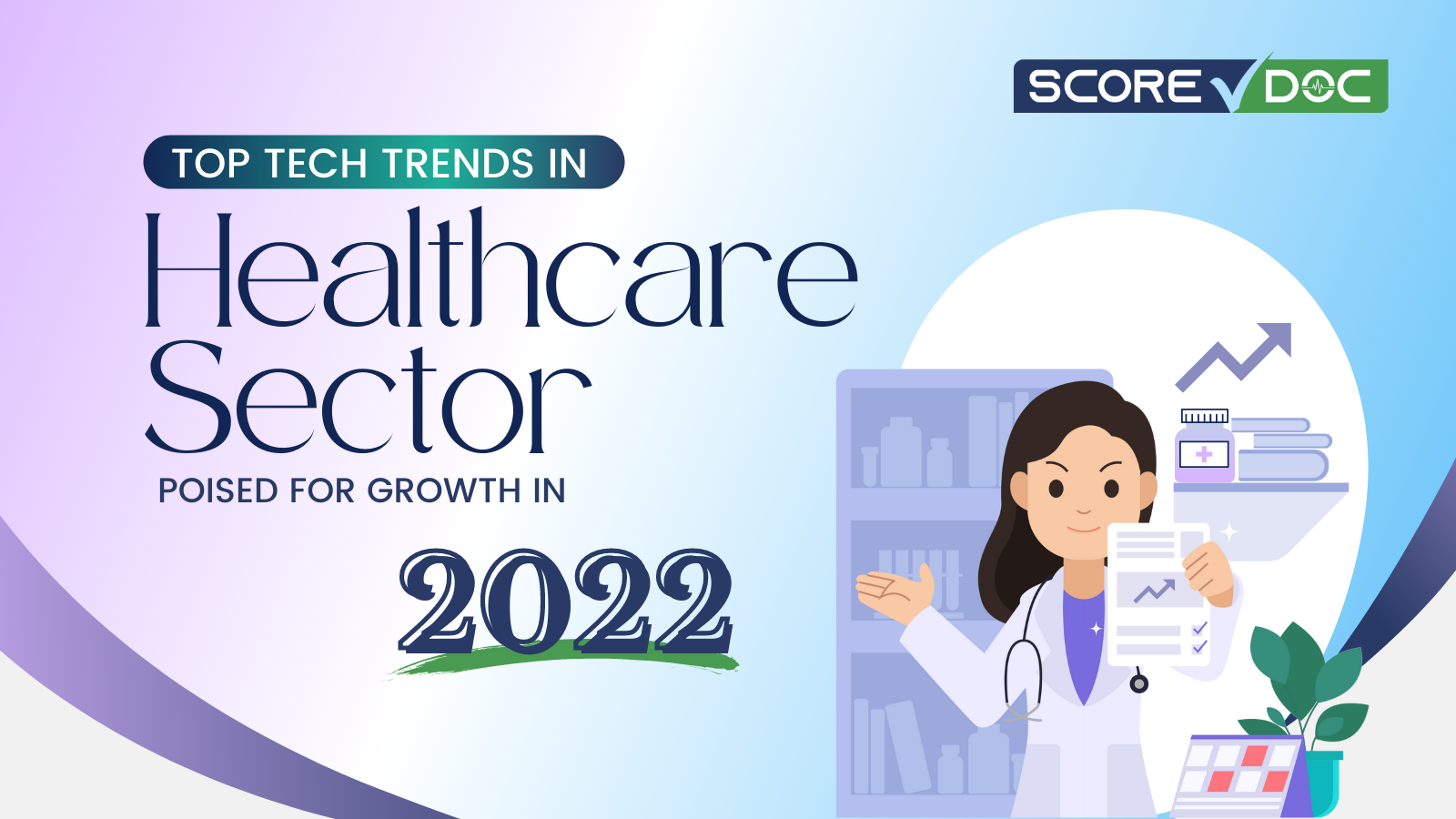Top Tech Trends in Healthcare Sector Poised for Growth in 2022 [Infographic]

According to the Centers for Medicare & Medicaid Services (CMS), National Health Expenditure (NHE) was $12,530 per person in 2020, accounting for roughly 19.7% of GDP. Also, a study by Humana Inc. revealed that over 25% of US healthcare spending is wasted, which can be attributed to administrative difficulties, duplicate services, unnecessary treatments, prescription pricing, and readmission rates.
Now, with the struggles of COVID-19, it's no wonder that digital technologies are changing the healthcare business this year. So, let's look at these developments and how they'll affect healthcare in 2022. In this article, we'll look at the top six healthcare technology trends for 2022.

Artificial Intelligence
Artificial intelligence (AI) is a promising healthcare technology that allows for automated service delivery. The following are some of the applications of AI in healthcare:
- Collection, management, and processing of a large amount of data.
- Deriving important information patterns for future implementations.
- Using chatbots to provide human-free communication.
According to a study, the value of AI-powered healthcare services would exceed 6.6 billion dollars in the next years.
Wearable Devices and Sensors
Wearable technology in healthcare might be a promising approach for ensuring that everyone has access to assistive healthcare. The following are some of the most popular uses of wearable technology in healthcare:
- Management of various health issues like sugar, bp, abnormal pulse, etc.
- Preventive care for the elderly and patients in intensive care units.
- Provides high-quality remote treatment to patients in nursing homes or rural locations, among other things.
The following are some of the most frequent wearable gadgets used in hospitals and remote care:
- ECG monitors
- Biosensors
- Blood pressure monitors, etc.
Overall, wearable technology in healthcare is predicted to change traditional methods and improve services by 75 percent in the future.
VR and AR Augmentation
AR and VR have been at the forefront of transforming the experiences of both patients and healthcare providers recently.
The following are some of the most popular applications of virtual reality in the healthcare industry:
- Essential medical knowledge is being imparted to physicians and surgeons through virtual training.
- Medical personnel and surgeons are being assisted with surgeries and practice procedures.
- Research and development industry has been strengthened to provide future healthcare professionals with better study materials.
- Team discussion when making critical decisions to obtain patient consent has become easier.
- VR also allows medical students to view virtual yet realistic representations of human anatomy.
According to Harvard Business Review research, surgeons who have received VR training perform 230 percent better than those who have not.
Blockchain Technology
Blockchain technology is expected to be the next big thing in the healthcare industry, ensuring safe and streamlined service.
The following are examples of blockchain applications in healthcare:
- Data protection and secured access methods.
- Improving the collection, management, and processing of patient data and insights.
- Enhancing the usage of healthcare applications for paying medical bills and conducting safe online transactions.
- Improving the performance of healthcare providers’ apps/websites.
- Assuring the highest level of protection for sensitive patient information.
As a result, by 2025, the healthcare sector's utilization of blockchain technology is estimated to exceed $5.61 billion.
Cloud Computing
Cloud computing has evolved as a profitable technology that is boosting several organizations and sectors throughout the world, including the healthcare segment.
In the healthcare industry, cloud computing is used in:
- Creating self-contained systems that require less management and are more productive.
- Streamlining data flow via cloud-based technologies.
- Ensuring consistent performance even at the most remote locations.
- Providing authorized users with data storage and remote access.
- Improving team cohesiveness and cooperation.
- Increasing the efficiency of patient-doctor communication.
The cloud-healthcare sector would increase above 64 billion USD by 2025, with prior annual cloud computing sales calculating up to 28.1 billion in 2020.
Robotics
Still, in a nascent stage, Robotics is one of the most intriguing technical breakthroughs in healthcare. The following are some of the most prevalent applications of robotics in the healthcare industry:
- Surgical and assistive robots help both patients and medical professionals during surgeries and treatment.
- Robotic companions can help you maintain your health daily if you have no one to take care of you.
- In instances like the pandemic, disinfectant robots could play a crucial role in keeping your home free of germs.
- Patients can also manage and monitor their health issues with the help of self-assistive robots.
Furthermore, the Exo Skeleton robot has shown to be a successful implementation in providing surgical assistance. Robotics has also shown promising results when treating individuals with physical ailments, particularly spinal cord injuries.
ScoreDoc is one such advanced technology designed to bridge the gap between you and your potential healthcare service provider. Through ScoreDoc, you can compare online reviews of your prospective healthcare provider on various internet platforms before scheduling an appointment. Contact us now to learn more about how to select the best healthcare service provider for all of your concerns.
You might also like:


